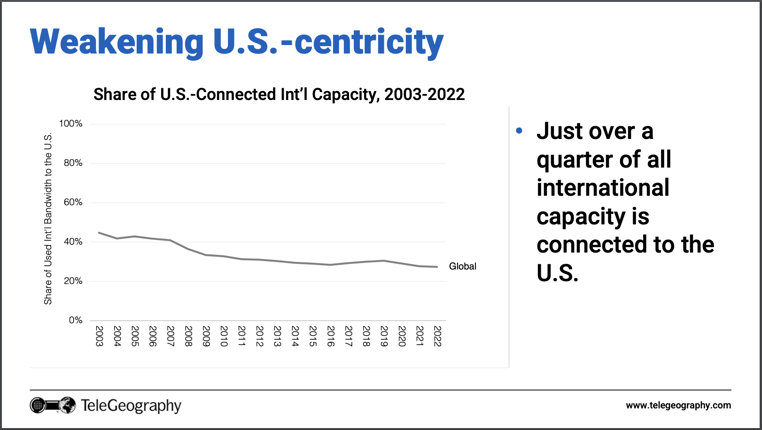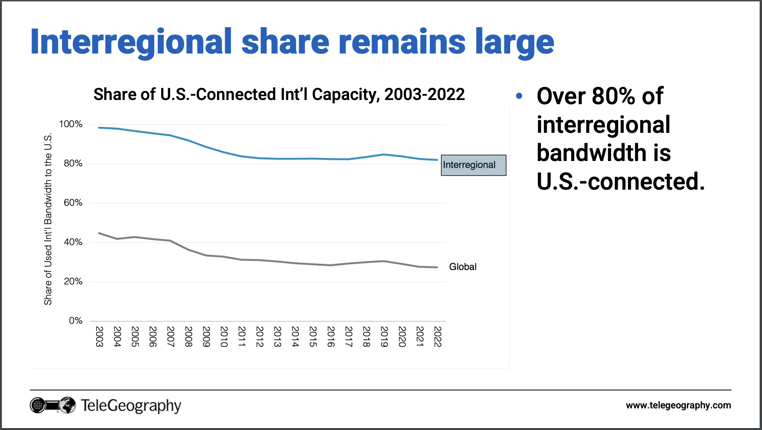Twenty years ago, the United States was very much at the center of the global internet.
In 2003, 98% of all interregional internet capacity and 42% of all international internet bandwidth was connected to the U.S. despite emerging intraregional capacity in Europe and Asia.
Submarine cables helped to enforce this centrality, and the highest capacity cables were connected to the U.S. Around this time, the U.S. was also among the cheapest places to connect to the internet.
So what’s happened to the U.S.’s role? Is the U.S. becoming less centric to the global network?
This is a question I answered during my presentation at PTC ’23.
As you'll see below, there's definitely weakening U.S.-centricity when it comes to the amount of total international capacity around the world.

The share of U.S.-connected international capacity declined from around 42% in 2003 to about 27% in 2022. Just over a quarter of all international capacity is connected to the United States.
But let's look at the other angle here.

In 2003, about 98% of interregional bandwidth was connected to the U.S. These days, that's down to around 82%.
However, these two lines don't tell the full story. We need to look at what's happening within regions. Do certain regions have a more or less need to connect to the United States over other parts of the world?
Now that we've established that there is some declining U.S.-centricity happening, the next question is why?
Alan Mauldin
Alan Mauldin is a Research Director at TeleGeography. He manages the company’s infrastructure research group, focusing primarily on submarine cables, terrestrial networks, international Internet infrastructure, and bandwidth demand modeling. He also advises clients with due diligence analysis, feasibility studies, and business plan development for projects around the world. Alan speaks frequently about the global network industry at a wide range of conferences, including PTC, Submarine Networks World, and SubOptic.





